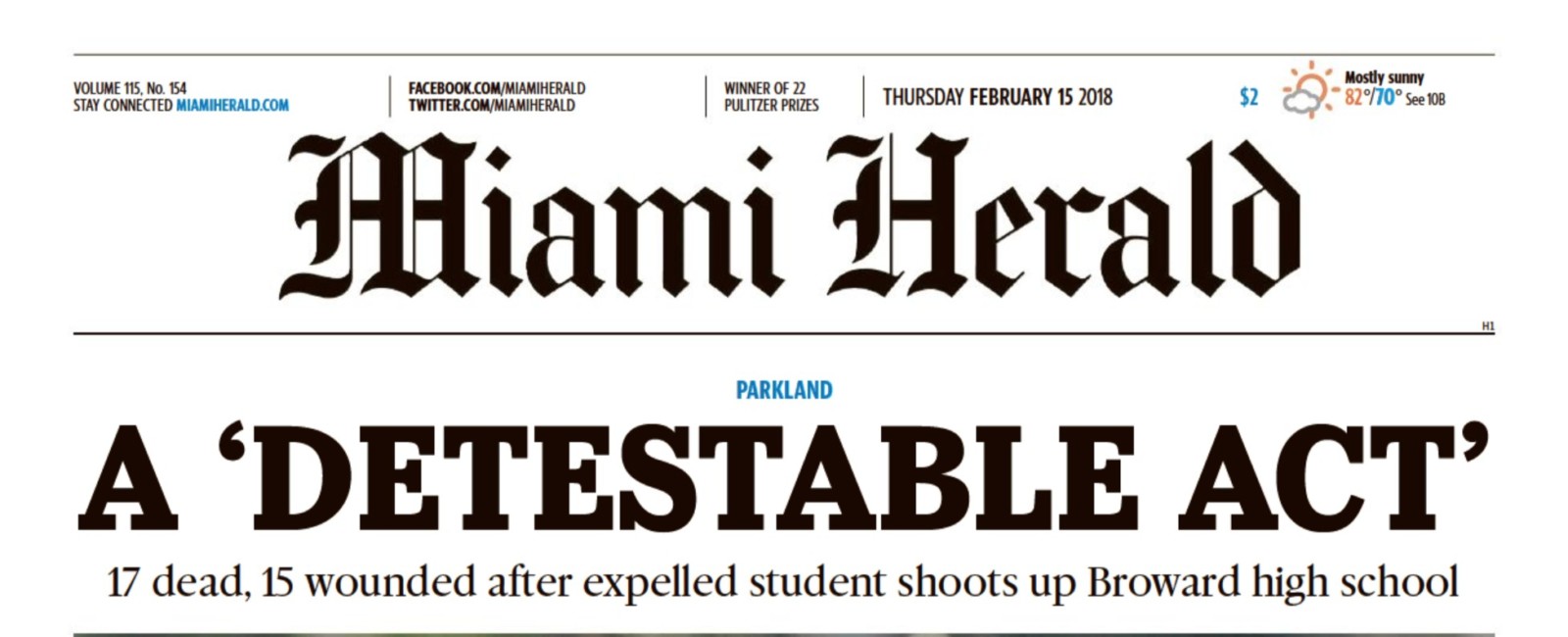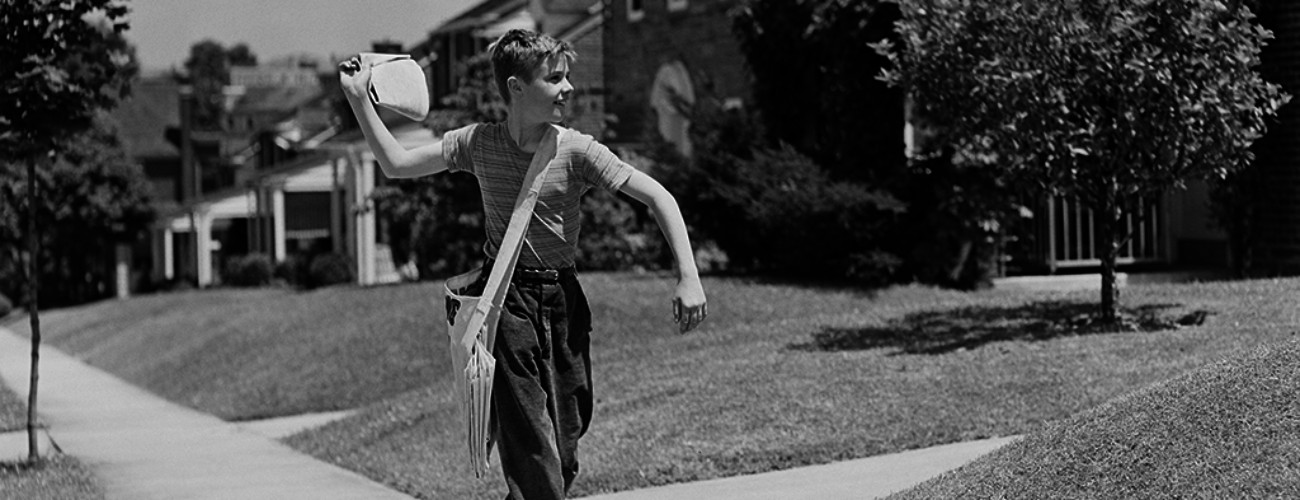“It’s just catastrophic. There really are no words,” said Broward County Sheriff Scott Israel. “A child of God is dead,” said CNN contributor Philip Mudd. “I’m kind of surprised it happened here, but I’m not really shocked,” Ryan Kadel, a 17-year-old senior at Marjory Stoneman Douglas High, told The Washington Post. “School shootings happen all the time, and then the news just forgets about them.”
At least 17 people are dead following another school shooting on American soil, this one in the South Florida town of Parkland. Yesterday’s tragedy is the US’s third-deadliest school shooting, and one of the 10 deadliest mass shootings in modern American history. Coverage of the event followed a now-familiar pattern, with cable news shots of students being evacuated, and somber contributors speaking with anchors who seemed resigned to covering these sort of tragedies on a regular basis. Wrapping up an interview with a congressman, CNN’s Wolf Blitzer said, “Let’s hope it stops. But clearly it won’t.”
ICYMI: Five ideas for more respectful media coverage after mass shootings

The front page of The Miami Herald on February 15, 2018.
One notable difference from coverage of past school shootings was the prevalence of social media postings from students still in the building. Videos of students sheltering in classrooms as gunshots echoed from offscreen provided a terrifying window into the experiences of those trapped in the middle of the chaos. Several outlets also shared text messages that students sent to loved ones.
A common theme across the coverage was just how normal these mass casualty events feel. Every few months, it seems, early reports of a shooting—at a school, a church, a concert—lead to news bulletins and breaking coverage followed by hours of somber analysis, thoughts and prayers from some and calls to legislative action from others. But nearly two decades after Columbine, the only thing that’s changed is the technology by which audiences experience the carnage. As Blitzer said, it’s clear we will be back here.
Below, more from the coverage of a horrifying, all-too-familiar event.
ICYMI: Billionaires gone wild
- A somber chronicle: During Fox News’s breaking coverage, Shepard Smith listed every school shooting since Columbine.
- Trump’s response: President Trump offered his condolences to the victims and their families on Twitter, but didn’t comment publicly. “I remember being at the White House on Dec. 14, 2012, the day of Sandy Hook,” The Washington Post’s Philip Rucker noted. “Obama went into the briefing room that afternoon to address the American people. A different WH approach today. Trump hasn’t spoken on camera, and his staff just called a lid.”
- Can the media do better?: Following the killing of 26 people in Sutherland Springs, Texas, in November, CJR’s Jon Allsop looked at ways journalists could improve their coverage of mass shooting events.
- Relevant again: The Onion once again had cause to run its story title “‘No Way To Prevent This,’ Says Only Nation Where This Regularly Happens,” but this time there was a twist. “When I wrote this headline, I had no idea it would be applied to the high school a mile from my house,” former Onion editor Jason Roeder tweeted.
Other notable stories
- Nicole Carroll, currently the vice president of news and editor of The Arizona Republic and azcentral.com, was named editor in chief of USA Today. She takes over the flagship of the Gannett empire from Joanne Lipman, who departed in December. Carroll recently oversaw the excellent multimedia project “The Wall,” which examined the impact of President Trump’s proposed border plan.
- For CJR, Siddhartha Deb examines what the assassination of a journalist says about media complacency in the face of Hindu nationalism’s violent rise in India. Gauri Lankesh, a left-wing journalist in Bangalore, was killed not just by the men who pulled the trigger, Deb writes, but also by a media culture that has minimized rising threats in one of the world’s most dangerous places to practice journalism.
- Rebekah Mercer, the reticent billionaire behind Breitbart, wrote an op-ed for The Wall Street Journal, attempting to change the narrative about her political goals. She took a shot at Steve Bannon, writing, “Stephen Bannon, its former chairman, took Breitbart in the wrong direction. Now that Mr. Bannon has resigned, Breitbart has the opportunity to refine its message and expand its influence.”
- “The American media landscape, like the rest of the country, is being reshaped by the whims of the ultra-rich,” write Alex Pareene in a scary piece for CJR on the threat to journalism posed by the whims of powerful, wealthy individuals who increasingly control the news business.
- BuzzFeed’s Steven Perlberg reports that the White House press corps is “more pissed off than usual” by contradictory responses to the Rob Porter scandal coming from different members of the West Wing. “The incident has transformed into the most infuriating and baffling episode in an administration whose communication strategy has often been defined by chaos and warring factions,” Perlberg writes.
- We often think of digital journalism as impervious to the crumbling of newsprint that threatens old-school papers, but in a piece from our new issue, Maria Bustillos writes that online archives are also under threat. The new battle over journalism’s digital legacy involves work that is “prone to decay or disappearance as servers, software, Web technologies, and computer languages break down.”
- We had a terrific launch for the new issue of our magazine earlier this week and want to thank all those who joined us in Toronto. Attendees got to hear from some brilliant journalists: Kathleen Carroll, former editor in chief of AP; Steve Adler, president and editor in chief of Reuters, Courtney Radsch, advocacy director of the Committee to Protect Journalists; and many more, including our own Alexandria Neason. Video of the event is now available here, in case you were unable to make it. Thanks also to CPJ, Reuters, and the Globe and Mail for their support of this issue and this special event.
TRENDING: The cost of reporting while female
Pete Vernon is a former CJR staff writer. Follow him on Twitter @ByPeteVernon.

